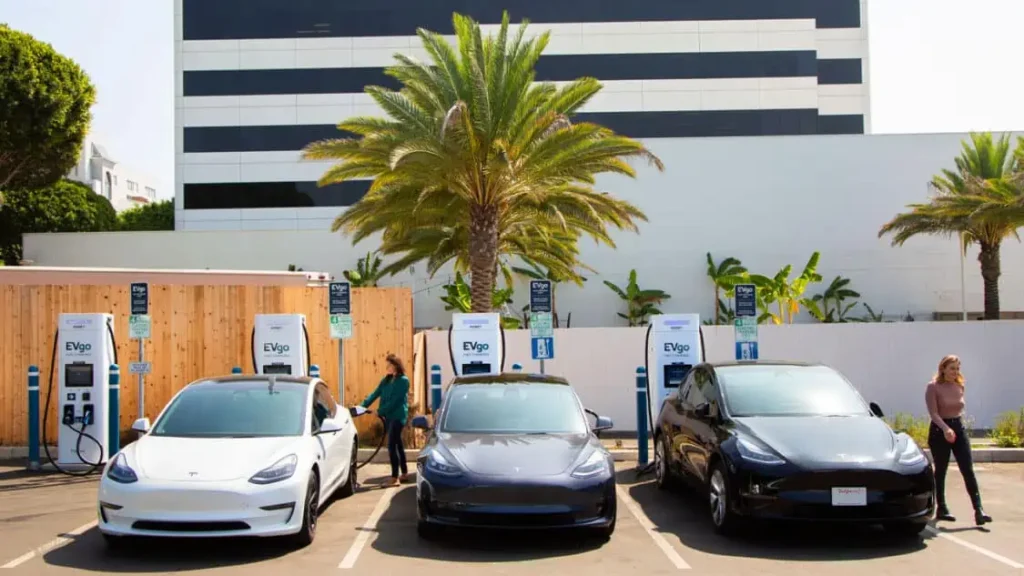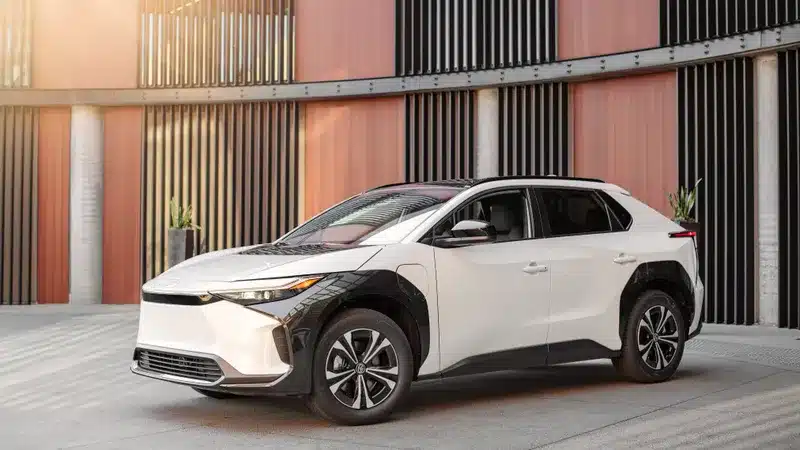Public EV Chargers Set to Surpass Gas Stations in Eight Years
Bloomberg reported America’s “charging deserts” continued to vanish quickly in Q2 . In the second quarter of 2024, America’s electric vehicle (EV) charging network expanded rapidly, as a diverse range of networks activated 704 new public fast-charging stations, bringing the nationwide total to nearly 9,000. This represents a significant 9% increase over a three-month period, according to a Bloomberg Green analysis of Department of Energy data.
As of July 18, 2024, the DOE’s Alternative Fuels Data Center reported 10,493 DC Fast stations, 55,847 Level 2 stations, and 184 Level 1 stations, for a total of 65,067.
This expansion highlights the concerted efforts to improve the infrastructure necessary to support the growing number of electric vehicles on American roads. The increase in fast-charging stations is crucial for alleviating range anxiety among EV drivers and making electric vehicles a more viable option for long-distance travel. The diverse array of networks involved in this expansion underscores the collaborative approach needed to address the country’s charging infrastructure challenges.
As more charging stations become available, the accessibility and convenience of EV charging continue to improve, promoting the adoption of electric vehicles and contributing to the broader goal of reducing carbon emissions and transitioning to cleaner energy sources. The ongoing development of charging infrastructure is a critical component of the larger effort to create a sustainable and environmentally friendly transportation system in the United States.

On April 16, navigating an electric vehicle through northern North Dakota became significantly easier with the activation of a new fast-charging station at a Simonson Station Store gas station in Minot, near a Red Wing boot shop. This development marks a crucial step in enhancing the region’s EV infrastructure, providing much-needed support for zero-emission drivers in the area.
Similarly, electric vehicle owners around El Paso, Texas, can breathe a sigh of relief thanks to two new charging stations up the road in Deming, New Mexico. This addition strengthens the charging network along critical travel routes, making long-distance journeys more feasible for EV drivers in the Southwest.
Additionally, anyone traveling along the Gulf Coast near Mobile, Alabama, can take advantage of a new bank of chargers that began operating on May 2 in Robertsdale, conveniently located near Buster’s Southern Pit BBQ. This new installation not only supports local EV drivers but also enhances the charging infrastructure for travelers heading down the Gulf Coast.
At the current pace, public fast-charging sites in the United States are set to outnumber gas stations in approximately eight years. However, the momentum behind the deployment of these chargers is expected to accelerate even further. North American operators are projected to spend a collective $6.1 billion on charging infrastructure this year, which is nearly double their investment from 2023, according to BloombergNEF estimates. This annual expenditure is anticipated to double once more by 2030.

EV Charging Demand Skyrocketing
“We’re seeing demand for fast charging skyrocket,” said Sara Rafalson, executive vice president at EVgo Inc., which operates almost 1,000 stations in the US. “We’re continuing to build bigger and bigger stations because we need to keep up with that demand.”
Retailers are increasingly adding EV chargers to attract the growing segment of US car buyers who are opting for battery-powered vehicles, which now comprise nearly 10% of the market. Gas station operators, in particular, are keen to join the electric vehicle movement. In the second quarter of 2024 alone, Shell introduced 30 new charging stations, Enel opened 11, Pilot Travel Centers added eight, and another seven appeared at Flying J rest stops, according to federal data.
“We’re getting past a turning point where fueling stations and convenience stores are really seeing the value proposition,” said Sam Houston, senior vehicles analyst at the Union of Concerned Scientists. “It’s a very welcome turn from how they were behaving in the regulatory space even as recently as a couple years ago.”
U.S. Bank is also recognizing the business development potential of EV charging, having installed chargers at 39 of its branches in California during the second quarter of 2024. This move reflects the bank’s commitment to supporting sustainable practices while providing added convenience for its customers.
In a similar vein, Waffle House has started integrating EV charging into its operations by adding charging to the parking lots at two of its Florida restaurants. This initiative allows the popular restaurant chain to attract electric vehicle owners who can charge their cars while enjoying a meal, enhancing customer experience and drawing in a new demographic of diners.
EVgo attributes the rising demand for EV charging to several factors, including people driving their electric cars farther than they used to and a growing number of EV owners living in multi-unit developments, where home charging options are often limited. Additionally, newer EV models are capable of charging more quickly than older ones, which encourages more drivers to utilize public fast-charging stations.
The company’s fastest-growing markets are Texas and Florida, followed by Michigan and Arizona. This geographic expansion reflects the increasing adoption of electric vehicles across diverse regions of the United States, driven by improved charging infrastructure and technological advancements in EVs.
“It’s worth remembering that the number of EVs sold [in the first] quarter is roughly equal to what was sold in all of 2020,” EVgo Chief Executive Officer Badar Khan said.
IEA Says US EV Sales Will Soar to 2.5 Million in 2025
The number of drivers going electric is rapidly increasing. In April, the International Energy Agency (IEA) estimated that US sales of fully electric vehicles (EVs) will soar to 2.5 million in 2025, up from 1.1 million in the previous year. This projected growth highlights the accelerating shift toward electric mobility as consumers, businesses, and policymakers embrace the benefits of zero-emission vehicles.

According to Stable Auto, Increased Utilization Means Profits
Meanwhile, charging stations are now getting busy enough to start generating profits. At the end of the first quarter of 2024, the average US fast-charging station was in use 18% of the time, equating to nearly five hours a day, according to Stable Auto. This utilization rate surpasses the estimated 15% usage threshold required for a charging station to be profitable.
This milestone is significant for the EV charging industry, demonstrating that the growing demand for electric vehicle charging is translating into viable business opportunities. As more drivers adopt electric vehicles, the increased usage of charging stations not only supports the financial sustainability of these operations but also encourages further investment in charging infrastructure.
NEVI Funded Part of Q2’s Charging Gains
The second-quarter surge in new EV chargers was significantly driven by the Biden administration’s National Electric Vehicle Infrastructure (NEVI) Formula program. This $5 billion initiative aims to address gaps in the national charging network. Although still in its early stages, the NEVI program has faced criticism from EV critics saying the rollouts are happening too slowly. EV expert Loren McDonald, CEO of EVAdoption, explained that the reasons for the delays are normal.
Despite these criticisms, the program is making progress. Eight NEVI-backed charging stations were opened across six states in the second quarter of 2024. These numbers are expected to increase rapidly, as 23 states have awarded contracts or signed agreements for an additional 550 stations, according to government reports.
The NEVI program is crucial for ensuring comprehensive coverage of EV charging infrastructure across the United States. By filling in gaps on the charging map, the program aims to make long-distance EV travel more feasible and convenient, thereby encouraging more drivers to switch to electric vehicles.
